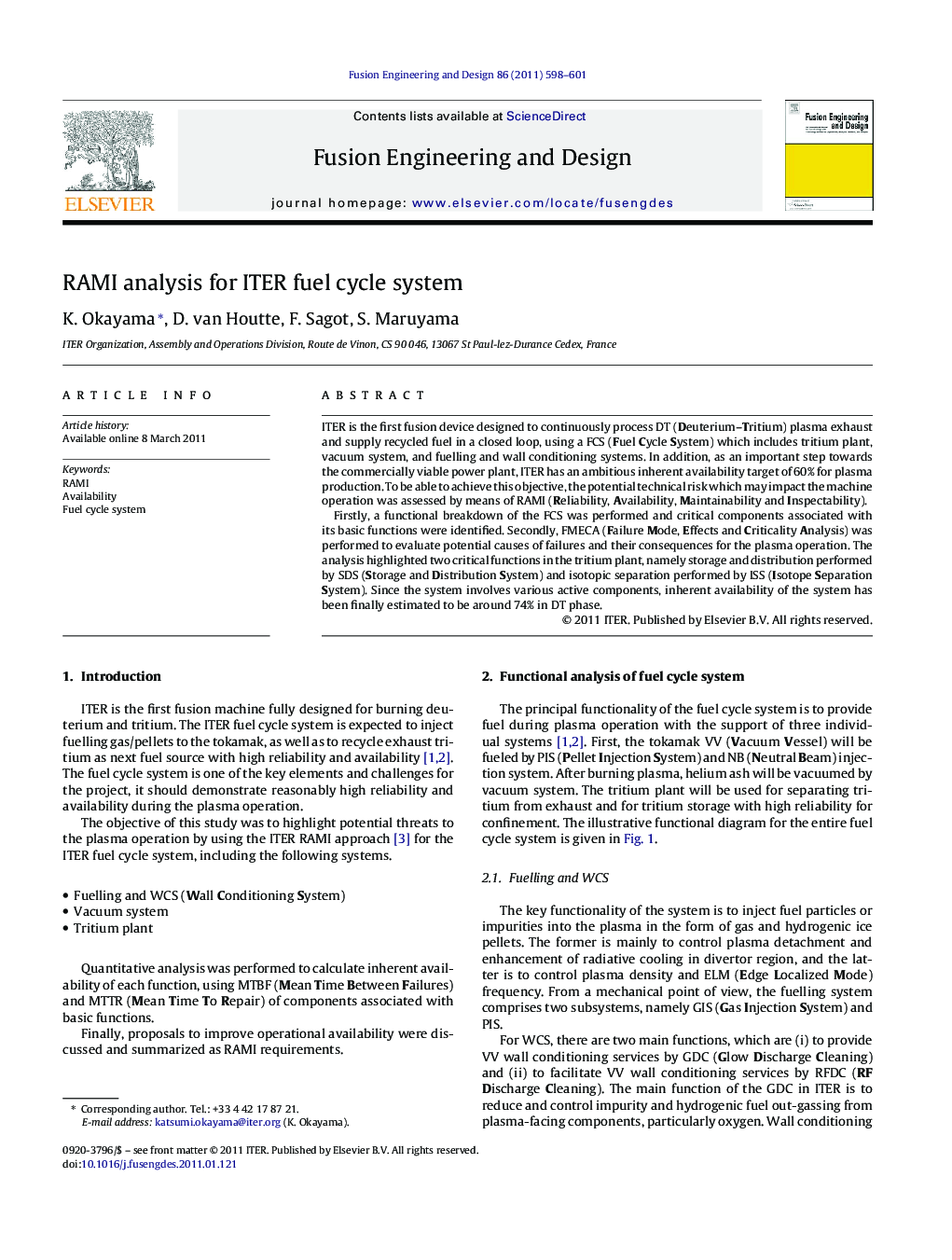| Article ID | Journal | Published Year | Pages | File Type |
|---|---|---|---|---|
| 272498 | Fusion Engineering and Design | 2011 | 4 Pages |
ITER is the first fusion device designed to continuously process DT (Deuterium–Tritium) plasma exhaust and supply recycled fuel in a closed loop, using a FCS (Fuel Cycle System) which includes tritium plant, vacuum system, and fuelling and wall conditioning systems. In addition, as an important step towards the commercially viable power plant, ITER has an ambitious inherent availability target of 60% for plasma production. To be able to achieve this objective, the potential technical risk which may impact the machine operation was assessed by means of RAMI (Reliability, Availability, Maintainability and Inspectability).Firstly, a functional breakdown of the FCS was performed and critical components associated with its basic functions were identified. Secondly, FMECA (Failure Mode, Effects and Criticality Analysis) was performed to evaluate potential causes of failures and their consequences for the plasma operation. The analysis highlighted two critical functions in the tritium plant, namely storage and distribution performed by SDS (Storage and Distribution System) and isotopic separation performed by ISS (Isotope Separation System). Since the system involves various active components, inherent availability of the system has been finally estimated to be around 74% in DT phase.
